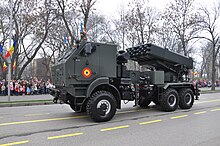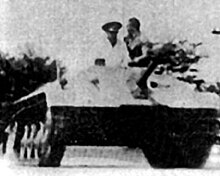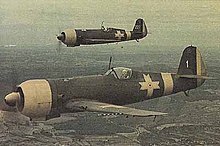Arms industry in Romania
 From Wikipedia - Reading time: 10 min
From Wikipedia - Reading time: 10 min









Before 1989, Romania was among the top ten arms exporters in the world, however its arms industry declined considerably during the 1990s. Exports fell from roughly $1 billion before 1989 to about $43 million in 2006,[1] and the number of employees also fell from 220,000 in 1990 to 20,000 in 2009.[2] Sales to the Romanian Armed Forces have plunged after Romania's accession to NATO in 2004, as factories continue to produce Warsaw Pact-caliber weapons and ammunition, which are incompatible with their Western counterparts.
As of 2009, sales are roughly evenly divided between the Romanian state and foreign customers such as European Union and Arab countries such as Egypt, Algeria and Iraq.[3] Other countries which have shown interest in Romanian equipment include Afghanistan, Israel, Switzerland, the United States, the United Arab Emirates, India, Georgia and a slew of African countries.[4] There have been some signs of slight recovery, with exports reaching €141 million in 2009. However, the arms industry in Romania still lags behind neighboring countries such as Ukraine,[5] Bulgaria[6] and Serbia.[7]
In recent years, the Romanian government has called, unsuccessfully, for the lifting of the European Union arms embargo on the People's Republic of China.[citation needed]
Manufacturers
[edit]Weapons and equipment
[edit]Small arms
[edit]- PA md. 86 assault rifle and carbine
- PM md. 63/65/90 assault rifle and carbine
- Pistol model 2000 handgun
- RATMIL SMG submachine gun
- Mitralieră md. 93 5.45×39mm LMG
- PM md. 64 7.62×39mm light machine gun
- PSL sniper rifle
- Dracula md. 98 machine pistol
- Mitraliera md. 66 7.62×54mmR Machine Gun
- PKT 7.62×54mmR Tank Machine Gun
- DShK 12,7x108mm Heavy Machine Gun
- ZPU 14,5x114mm x1 x2 x4 Heavy Machine Gun
- AG-7 rocket propelled grenade
- AG-9 Rocket propelled grenade
- CA-94 surface-to-air missile system
AFVs
[edit]- TR-77-580 main battle tank
- TR-85/TR-85 M1 main battle tank
- TR-125 main battle tank
- MLI-84/MLI-84M infantry fighting vehicle
- MLVM tracked armored personnel carrier
- TAB-71 armored personnel carrier
- TAB-77 armored personnel carrier
- ABC-79M armored personnel carrier
- B33 Zimbru armored personnel carrier
- Saur 1 armored personnel carrier
- Saur-2 armored personnel carrier
- ARO-244 ABI armored 4x4 vehicle
- CA-95 mobile anti-air missile system
Artillery
[edit]- M-1980/1988 30 mm x 3 towed anti-aircraft gun
- M-1988 60 mm infantry mortar
- M-1977 81/82 mm infantry mortar
- M-1982 120 mm infantry mortar
- M-1982 76 mm mountain gun M48
- M-1993 98 mm mountain howitzer
- M-1977 100 mm antitank gun 2A19/T-12 antitank gun
- M-1982 130 mm towed field gun M1954 (M-46)
- M-1981 152 mm towed gun-howitzer M1955 (D-20)
- M-1985 152 mm howitzer 2A65
- M-1989 122 mm self-propelled howitzer 2S1
- LAROM MLRS 122 mm x 20 rockets x 2 / 160 mm x 13 rockets x 2
- ATROM 155 mm self-propelled howitzer system
Aircraft
[edit]Weapons produced during World War II and the Interwar period
[edit]






Non-self-propelled weapons
[edit]| Vessel | Design/Licence Origin | Number | Notes | ||
|---|---|---|---|---|---|
| Submachine guns | |||||
| Orița M1941 | 6000+ | Local design, entered operational service with the Romanian Army in 1943 with a production rate of 666 pieces per month as of October 1942[8] (6,000 produced until October 1943)[9] | |||
| Machine guns | |||||
| ZB vz. 30 | 10,000 | 10,000 licence-built locally at Cugir after Czechoslovak design,[10] with a production rate of 250 pieces per month as of October 1942[11] | |||
| Mortars | |||||
| Brandt Mle 1935 | 1,115+ | Licence acquired from France to produce 175 mortars at the Voina Works in Brașov, but the number specified by the licence was far exceeded during the war, with a production rate of 26 pieces per month as of October 1942[12][13] (1,115 such mortars were built in Romania by mid-1943)[14] | |||
| Brandt Mle 27/31 | 456+ | Licence acquired from France to produce 410 mortars at the Voina Works in Brașov, but the number specified by the licence was far exceeded during the war, with a production rate of 30 pieces per month as of October 1942[15][16] (456 such mortars were built in Romania by mid-1943)[17] | |||
| M1938 | 500+ | Captured and reverse-engineered Soviet model, produced at the Reșița Works with a production rate of 80 pieces per month as of October 1942[18] (in total, over 500 of these mortars were built)[19] | |||
| Anti-aircraft guns | |||||
| 3.7 cm flak | 360 | 360 produced under German licence at the Astra Works beginning with 1938, with 102 delivered by May 1941 and a production rate of 6 pieces per month as of October 1942[20] | |||
| 75 mm Vickers | 200 | 100 built under British licence by the Reșița Works beginning with 1936, with 100 delivered by mid-1941 and then a second batch of 100 started in July 1941 outside the licence, the production rate being of 5 pieces per month as of October 1942[21] | |||
| Anti-tank guns | |||||
| 47 mm Schneider | 140+ | Licence acquired from France to produce 140 guns at the Concordia Works in Ploiești, but the number specified by the licence was far exceeded during the war, with a production rate of 14 pieces per month as of October 1942[22][23] | |||
| 75 mm Reșița | 375 | Native design combining features from several foreign models, a total of 210 pieces were produced at the Reșița Works, 120 at the Astra Works in Brașov and 42 at the Concordia Works in Ploiești in addition to three prototypes[24] | |||
| Field artillery | |||||
| 100 mm Skoda | - | The Astra Works in Romania manufactured gun barrels for these pieces[25] | |||
| 150 mm Skoda | - | The Astra Works in Romania manufactured gun barrels for these pieces[26] | |||
Romanian monthly armament production (October 1942)[27]
| Model | Number |
|---|---|
| Orița M1941 submachine gun | 666 |
| ZB vz. 30 machine gun | 250 |
| Brandt 60 mm mortar | 26 |
| Brandt 81 mm mortar | 30 |
| M1938 120 mm mortar | 80 |
| Rheinmetall 37 mm AA gun | 6 |
| Vickers 75 mm AA gun | 5 |
| Schneider 47 mm AT gun | 14 |
AFVs
[edit]Aircraft
[edit]- IAR 14 fighter (20 built)
- IAR 80 fighter (448 built)
- IAR 37 reconnaissance and light bomber (380 built)
- Morane-Saulnier MS 35 (30 built)[28]
- Potez 25 (250 built)[29]
- Fleet 10G (220 built)[30]
- PZL P.11 (95 built)[31]
- PZL P.24 (25 built)[32]
Warships
[edit]- Amiral-Murgescu minelaying destroyer escort
- Rechinul submarine
- Marsuinul submarine
- DB-13-class minesweeper (4 built)
- Dutch-designed torpedo boats (6 built)[33]
- S-boats (over 10 re-assembled for the Kriegsmarine)
- Type IIB U-boats (6 re-assembled for the Kriegsmarine)
Weapons produced during World War I and prior
[edit]
Artillery
[edit]- Obuzierul Krupp, calibrul 105 mm, model 1912 (120 built)
- 250 mm Negrei Model 1916 heavy mortar (unknown numbers)[34]
- 57 mm Burileanu anti-aircraft gun system (132 built)[35]
Aircraft
[edit]- A Vlaicu I trainer (1 built)
- A Vlaicu II trainer (1 built)
- A Vlaicu III trainer (1 built)
Warships
[edit]- Brătianu-class river monitor (4 assembled)
References
[edit]- ^ "INVESTITII: In transeele industriei de armament".
- ^ "Firmele româneşti de armament vor ca România să urgenteze semnarea Co…". Archived from the original on 7 September 2012.
- ^ "Industria de armament a vândut, în 2009, produse militare de 100 de milioane euro, spun producătorii - Cotidianul". Archived from the original on 2009-11-13. Retrieved 2009-11-30.
- ^ "Industria de armament nu se preda". Archived from the original on 16 July 2012.
- ^ Tsukanova, Anya (October 7, 2008). "Pirates shine spotlight on Ukraine arms-trafficking". Manila Times. Archived from the original on 11 December 2008. Retrieved 30 December 2008.
- ^ "Bulgaria's Arms Export Totals US$250 Million Annually". Archived from the original on 2009-08-18. Retrieved 2009-11-30.
- ^ "Archived copy" (PDF). Archived from the original (PDF) on 2009-11-22. Retrieved 2009-11-30.
{{cite web}}: CS1 maint: archived copy as title (link) - ^ Mark Axworthy, London: Arms and Armour, 1995, Third Axis, Fourth Ally: Romanian Armed Forces in the European War, 1941–1945, p. 75
- ^ Mark Axworthy, London: Arms and Armour, 1995, Third Axis, Fourth Ally: Romanian Armed Forces in the European War, 1941–1945, p. 149
- ^ John Walter, Greenhill Books, 2004, Guns of the Third Reich, p. 86
- ^ Mark Axworthy, London: Arms and Armour, 1995, Third Axis, Fourth Ally: Romanian Armed Forces in the European War, 1941–1945, p. 75
- ^ Mark Axworthy, London: Arms and Armour, 1995, Third Axis, Fourth Ally: Romanian Armed Forces in the European War, 1941–1945, pp. 29-30 and 75
- ^ Great Britain. Foreign Office, Ministry of Economic Warfare, 1944, Rumania Basic Handbook, p. 27
- ^ Mark Axworthy, London: Arms and Armour, 1995, Third Axis, Fourth Ally: Romanian Armed Forces in the European War, 1941–1945, pp. 147, 76 and 29
- ^ Mark Axworthy, London: Arms and Armour, 1995, Third Axis, Fourth Ally: Romanian Armed Forces in the European War, 1941–1945, pp. 29-30 and 75
- ^ Great Britain. Foreign Office, Ministry of Economic Warfare, 1944, Rumania Basic Handbook, p. 27
- ^ Mark Axworthy, London: Arms and Armour, 1995, Third Axis, Fourth Ally: Romanian Armed Forces in the European War, 1941–1945, pp. 147, 76 and 29
- ^ Mark Axworthy, London: Arms and Armour, 1995, Third Axis, Fourth Ally: Romanian Armed Forces in the European War, 1941–1945, p. 75
- ^ Mark Axworthy, London: Arms and Armour, 1995, Third Axis, Fourth Ally: Romanian Armed Forces in the European War, 1941–1945, photo album between pages 96 and 97 (page 12 of the album)
- ^ Mark Axworthy, London: Arms and Armour, 1995, Third Axis, Fourth Ally: Romanian Armed Forces in the European War, 1941–1945, pp. 30 and 75
- ^ Mark Axworthy, London: Arms and Armour, 1995, Third Axis, Fourth Ally: Romanian Armed Forces in the European War, 1941–1945, pp. 30 and 75
- ^ Mark Axworthy, London: Arms and Armour, 1995, Third Axis, Fourth Ally: Romanian Armed Forces in the European War, 1941–1945, pp. 29-30 and 75
- ^ Great Britain. Foreign Office, Ministry of Economic Warfare, 1944, Rumania Basic Handbook, p. 27
- ^ Mark Axworthy, London: Arms and Armour, 1995, Third Axis, Fourth Ally: Romanian Armed Forces in the European War, 1941–1945, pp. 149 and 235-237
- ^ Mark Axworthy, London: Arms and Armour, 1995, Third Axis, Fourth Ally: Romanian Armed Forces in the European War, 1941–1945, p. 29
- ^ Mark Axworthy, London: Arms and Armour, 1995, Third Axis, Fourth Ally: Romanian Armed Forces in the European War, 1941–1945, p. 29
- ^ Mark Axworthy, London: Arms and Armour, 1995, Third Axis, Fourth Ally: Romanian Armed Forces in the European War, 1941–1945, p. 75
- ^ Francesco Sorge, Giuseppe Genchi, Springer, 2015, Essays on the History of Mechanical Engineering, p. 144
- ^ Francesco Sorge, Giuseppe Genchi, Springer, 2015, Essays on the History of Mechanical Engineering, p. 144
- ^ Francesco Sorge, Giuseppe Genchi, Springer, 2015, Essays on the History of Mechanical Engineering, p. 144
- ^ Morgała, Andrzej (1997), Samoloty wojskowe w Polsce 1918-1924 [Military aircraft in Poland 1918-1924] (in Polish), Warsaw: Lampart, pp. 63 and 69
- ^ Bernád, Dénes, Rumanian Air Force: The Prime Decade 1938-1947, Carrollton, TX: Squadron/Signal Publications Inc, 1999, p. 45
- ^ Spencer C. Tucker, World War II at Sea: An Encyclopedia: An Encyclopedia, p. 633
- ^ Adrian Storea, Gheorghe Băjenaru, Artileria română în date și imagini (Romanian artillery in data and pictures), p. 54 (in Romanian)
- ^ Adrian Storea, Gheorghe Băjenaru, Artileria română în date și imagini (Romanian artillery in data and pictures), p. 63 (in Romanian)
 KSF
KSF